ASUS PB278Q Review: An IPS Competitor Emerges
by Chris Heinonen on November 19, 2012 11:00 PM ESTASUS PB278Q Screen Uniformity
The larger the display, the more concerned I am about how uniform the display is. There is more room for uneven backlighting as they have a larger area to illuminate, and users will view the display at wider angles that already will cause some drop in light output. Here again I am measuring this using a 5x5 ANSI pattern using the i1DisplayPro to provide better real-world results and prevent dynamic contrast from creating totally irrelevant results.
With the center at 200 nits plus the surrounding eight measurements, it averages out to 190.6 nits. When looking at the whole display we see an average of 182 nits with a pretty good roll-off on the right side and the upper-left area of the screen. These areas fall down to as low at 157 nits, which is almost a 25% drop off from the center of the screen. I really like displays to stay within 15% at the outer edge, which would be 170 nits here, but the ASUS can’t quite do this. The average brightness level for the outside edge is 178 nits because the top of the screen averages 196 nits, but the right side drops down pretty far.
With the black measures, we see some light bleed in the upper right and lower right corners. The black level is bit higher, all the way up to 0.356 nits in the lower right, compared to the 0.212 nits in the center of the screen. The center of the screen is very close to the same, with an average difference of only 0.004 nits. The outside does worse with an average difference of 0.012 nits compared to the center. If those corners weren’t bright this would be a very uniform black screen, but those two measurements really cause an issue here.
Contrast uniformity is mostly good with exceptions in the corners of the screen. The center is 942:1 and the average of the surrounding area is 916:1, but the average contrast of the outside edge falls down to 850:1 for an overall 25-point average of 874:1. This is really undone by the corners that have an average of 746:1. Where the Dell U2713HM had 16 locations that managed a contrast ratio of 950:1 or better, there were only 3 measurements on the ASUS that were at the same level.

The dE uniformity was very strange, with a large jump in the dE on the right side of the screen, just like we had a fall off in light level. I made sure to run this multiple times after seeing these results but they were consistent across the different measurements. For the center and left side of the screen, the dE measures were fine, staying at 2.0 or below. On the right side the grayscale values were far different than the rest of the screen, with the white dE going from around 1.5 to around 3.0, and the rest of the shades being worse as well. The color numbers are pretty close, but the uneven backlighting on the right side seems to also influence the grayscale uniformity here and leads to a higher error level than I would like to see.
Overall the center of the PB278Q scores very well for uniformity, but once we get to the outside edge there are issues with bright corners and light fall-off on the edges that leads to worse overall results. I don’t think that any of the issues are deal breaking, but they seem to indicate an issue with the backlighting system in the PB278Q.


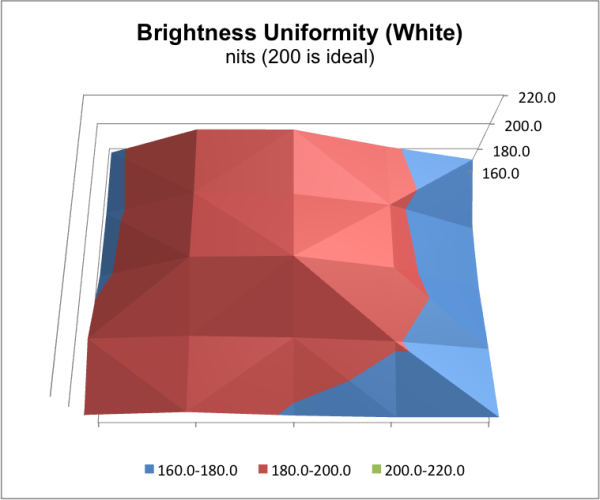
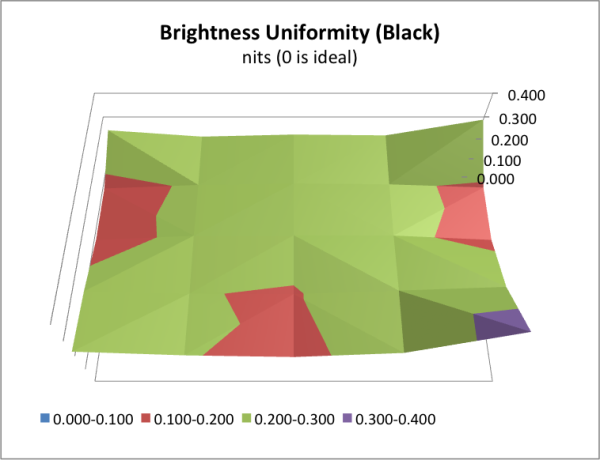
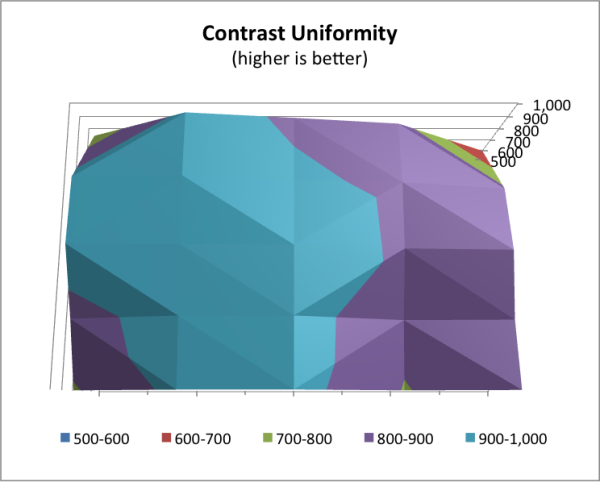
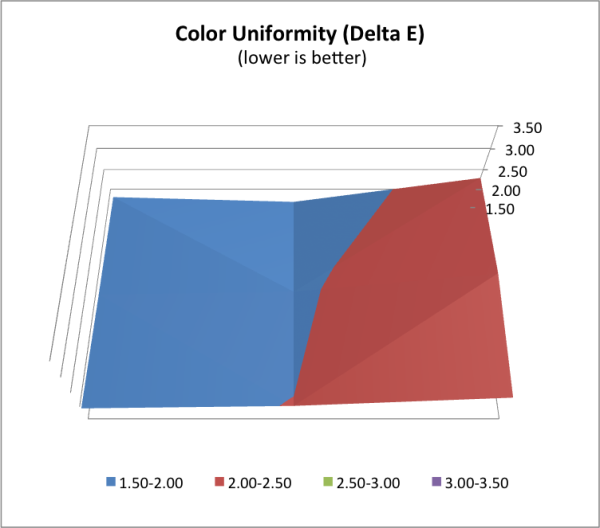
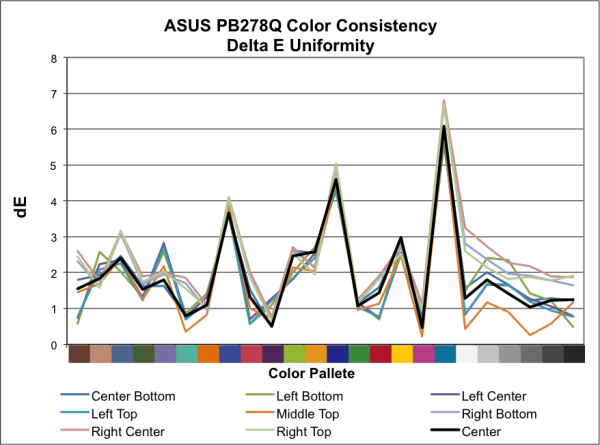








55 Comments
View All Comments
praeses - Monday, November 19, 2012 - link
Can you get the PWM frequency used for the backlight? If its variable, then at 25%, 50%, and 75% brightness levels?DaFox - Tuesday, November 20, 2012 - link
PWM frequency is very important to me as well these days.martyrant - Tuesday, November 20, 2012 - link
+1WoodyPWX - Wednesday, November 21, 2012 - link
That's why I bought the Dell U2713HM. It doesn't use PWM at all => no visible flickering. My eyes are very sensitive to that.p05esto - Tuesday, November 20, 2012 - link
I would like some opinions on does PWM matter? I sit in front of a screen ALL day and most nights. Does PWM matter to my eyes and ability to stay focused? I think my currentl monitor uses PWM (I tried the camera test, just roughly but I saw lines).Death666Angel - Tuesday, November 20, 2012 - link
Huh? Only you can answer that question. If you don't have trouble with a monitor with a PWM back lighting, then it obviously doesn't matter to you. Great article about it: http://www.prad.de/en/monitore/specials/backlight.... And they test PWM frequency with every monitor they get nowadays. :)gevorg - Tuesday, November 20, 2012 - link
Checkout this article on how to measure PWM of your monitor:http://www.tftcentral.co.uk/articles/pulse_width_m...
demonbug - Wednesday, November 21, 2012 - link
Interesting. Discovered mine is at 240 Hz, which would explain why I get that flickering feeling (it's a cheap TN panel with an LED backlight, so not surprising). I'll have to try running it at higher brightness and see if that helps.Oxford Guy - Tuesday, November 20, 2012 - link
Eyestrain isn't always easy to detect.The bottom line is that there are PWM-free panels now and they simply don't flicker.
A cheap way to stop PWM flicker is to turn a PWM monitor to full brightness. A TN panel can be tilted vertically to make the brightness more bearable. But, it's better, of course, to get a constant control backlight.
jjj - Monday, November 19, 2012 - link
not bad not great so it comes down to price and that's not all that attractive.You should see if you can get your hands on that extra wide 29 inch Dell,they started selling it at 699$ (it can be had for 630 with a code atm).